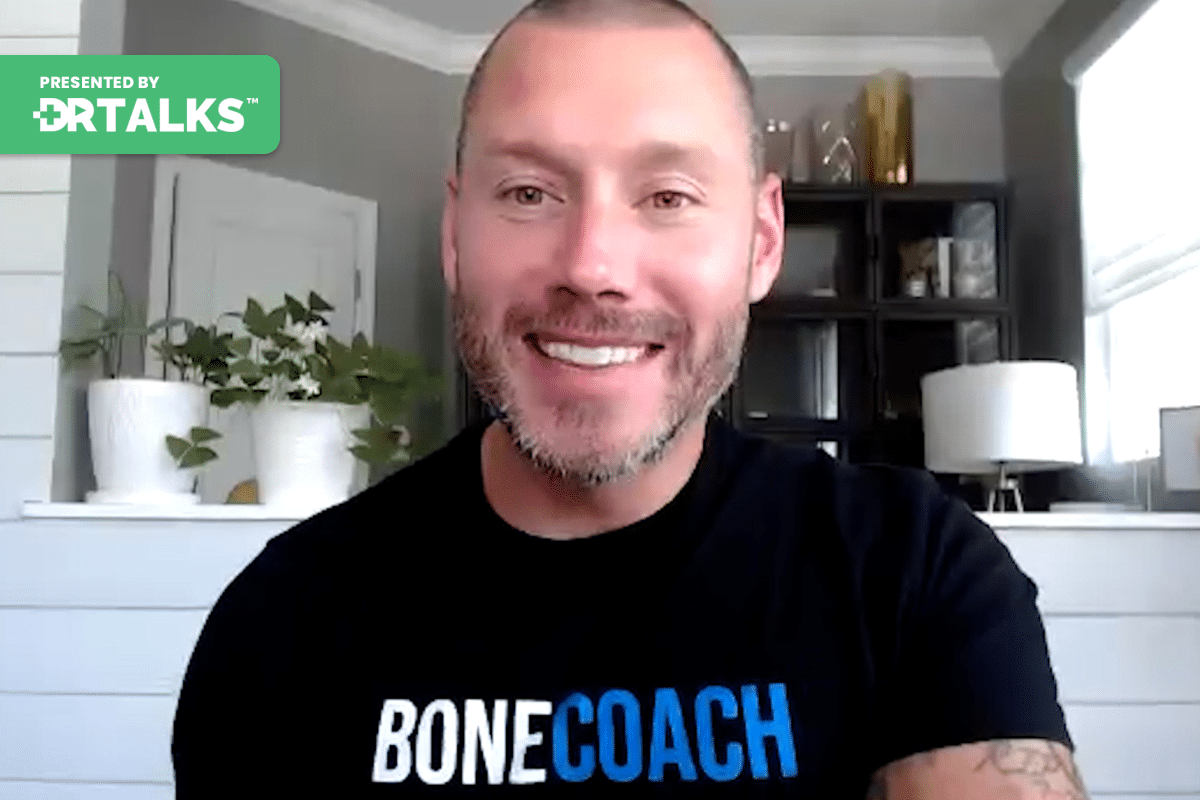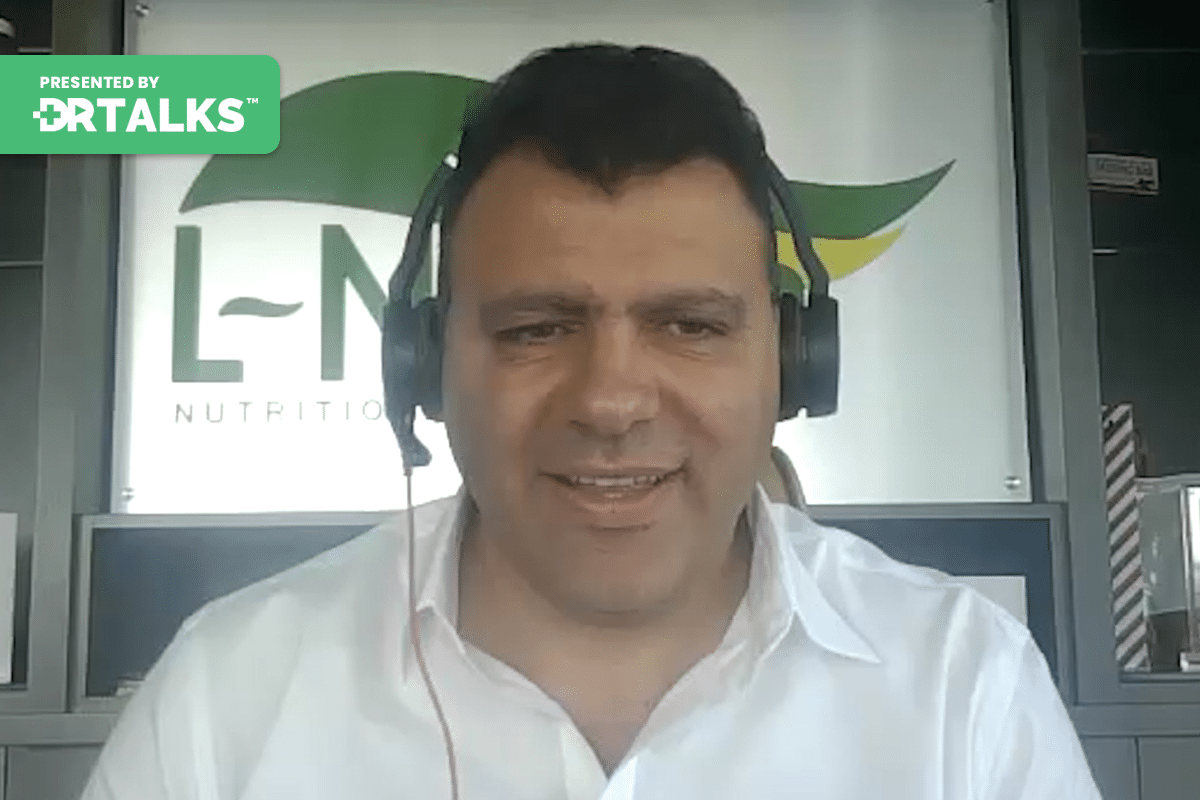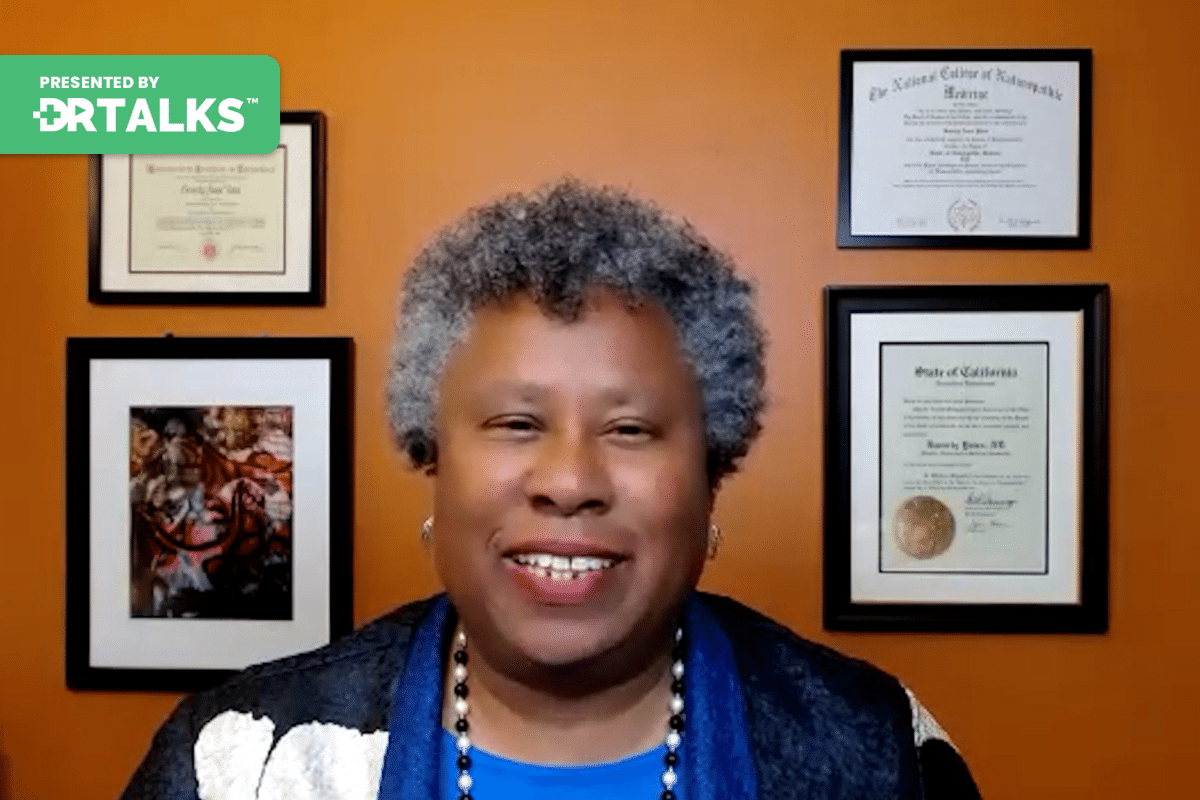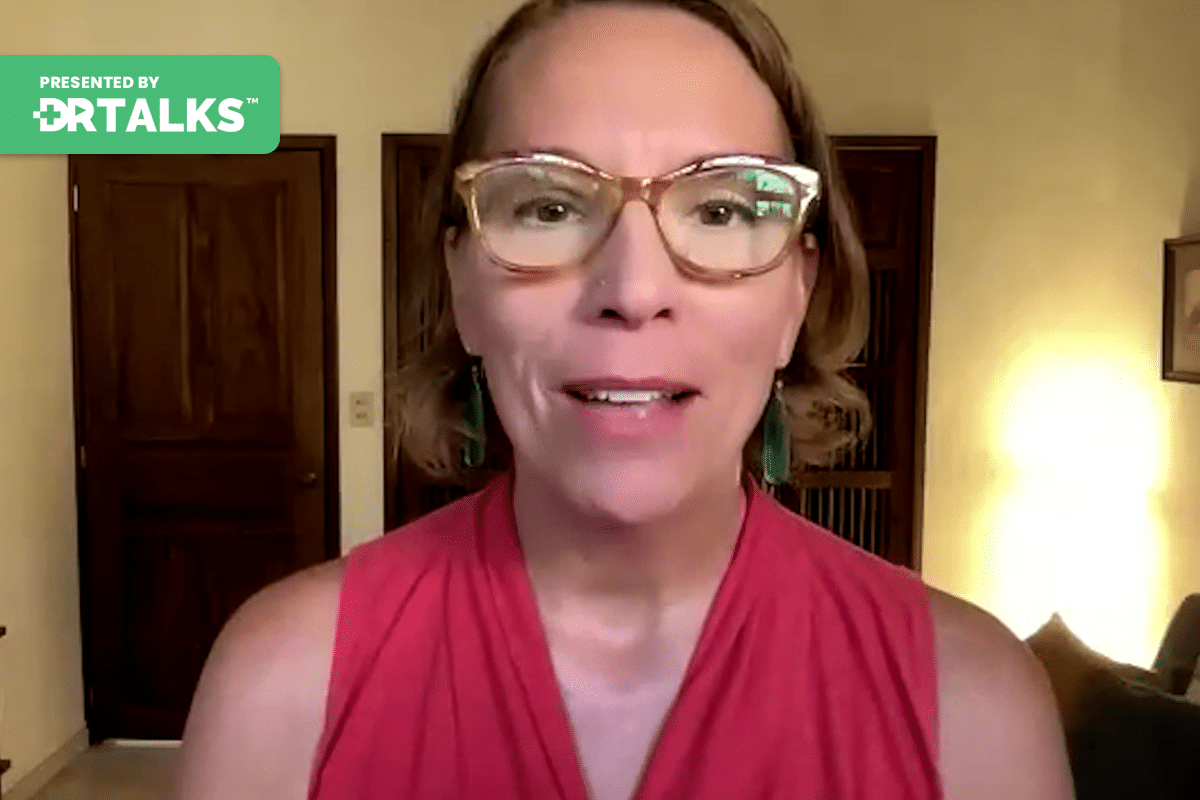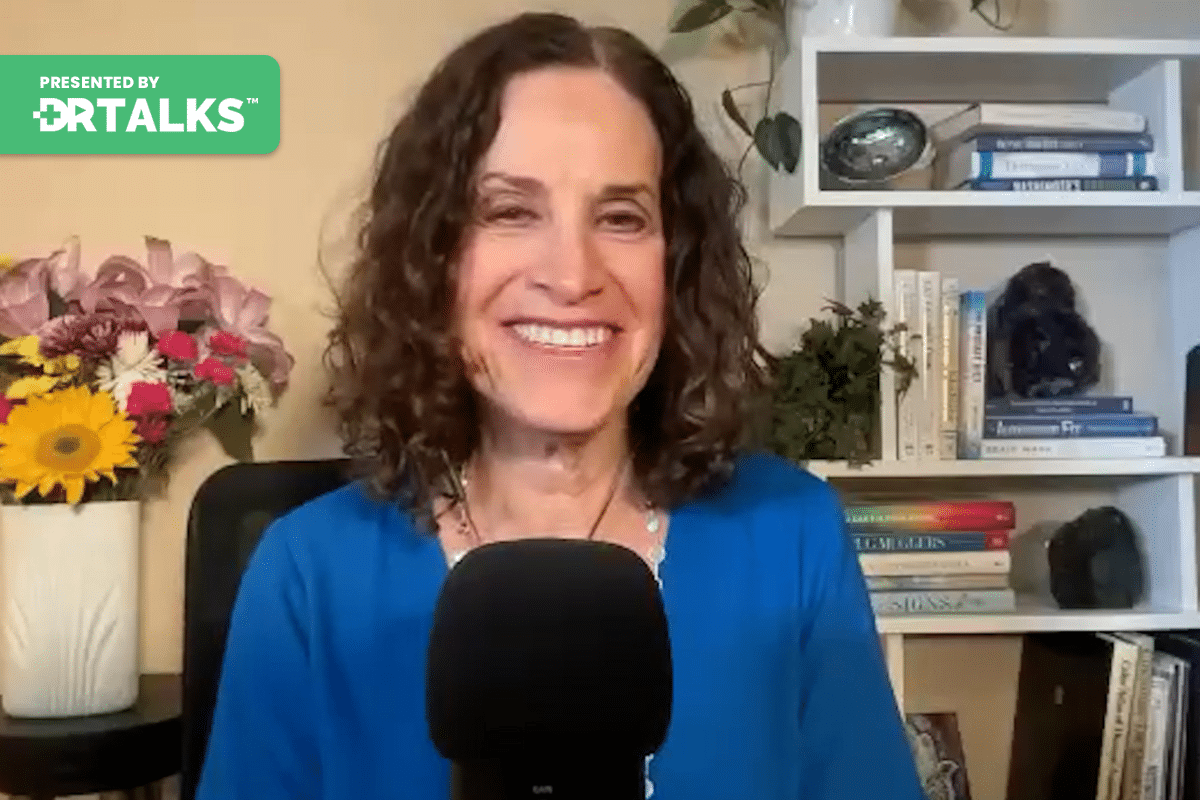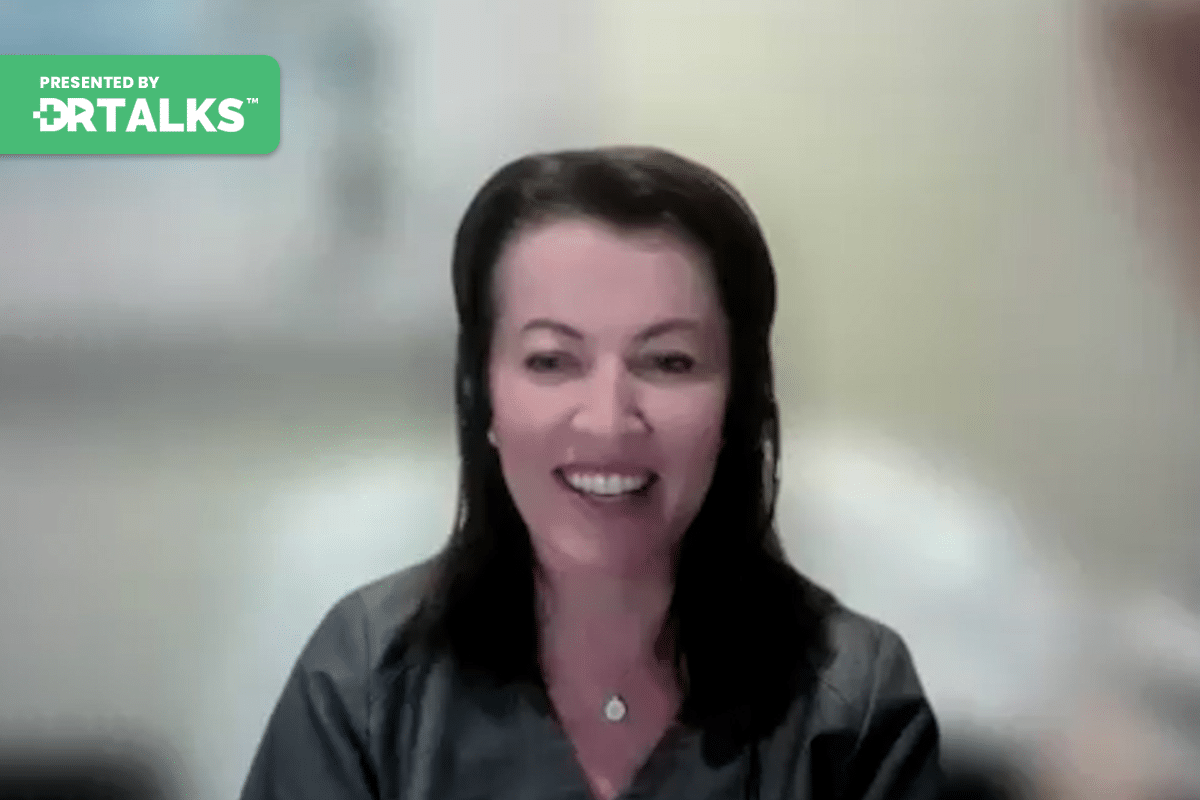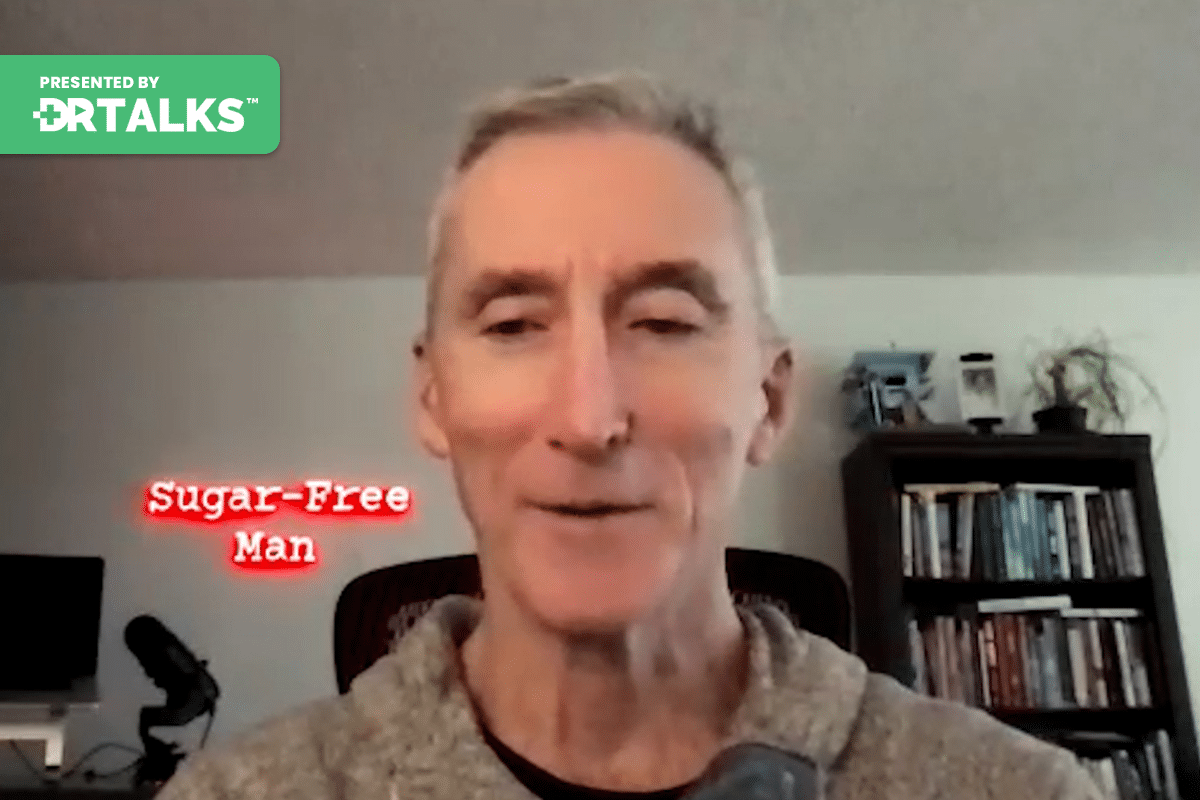Join the discussion below
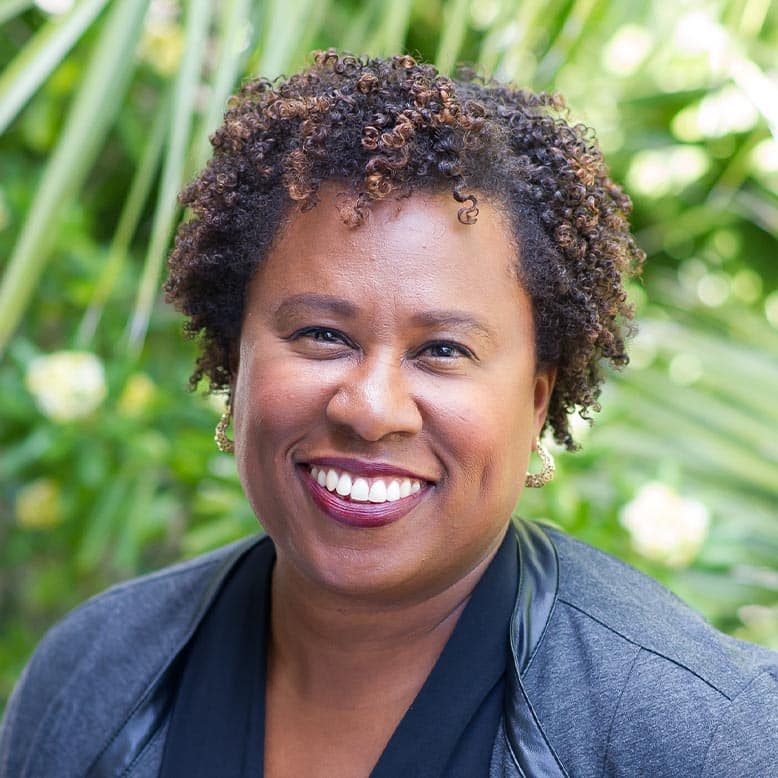
Dr. Beverly Yates ND is a licensed Doctor of Naturopathic Medicine. She is the nation's leader in online type 2 diabetes care. Her virtual practice has programs and supplements to help people lower their blood sugar naturally, at home, without ever having to step foot in a clinic. Dr. Yates... Read More
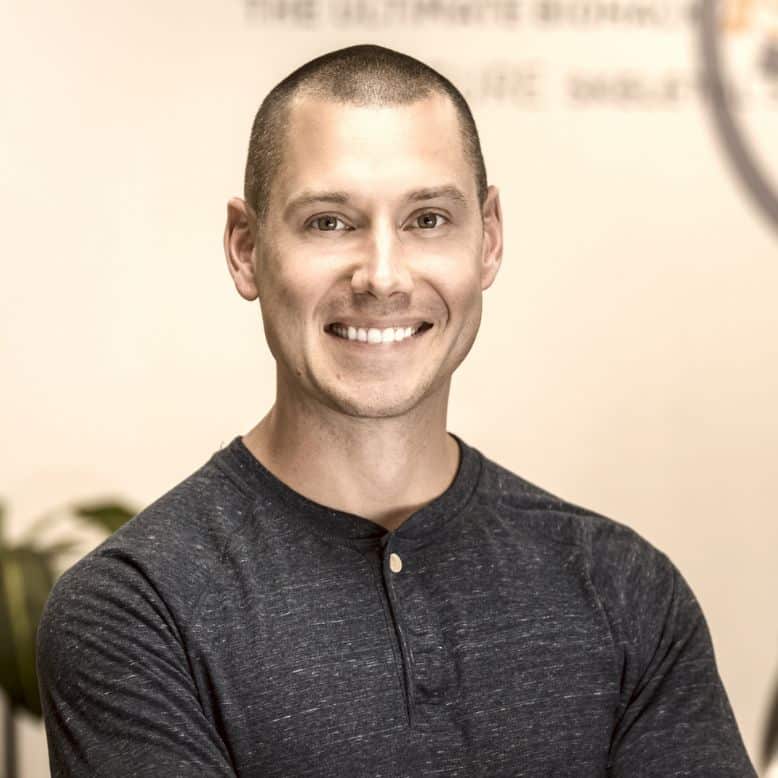
Kevin Ellis, better known as Bone Coach™, is a certified Integrative Nutrition health coach, podcaster, YouTuber, bone health advocate, and the founder of BoneCoach.com. After an osteoporosis diagnosis in his early 30s, he realized just how challenging it can be for the average person to make sense of what needs... Read More
- Understand the connection between bone health and diabetes
- Learn about osteopenia and osteoporosis, their prevalence, and identification methods
- Explore treatment options beyond medication and discover the possibility of rebuilding bone even after loss, regardless of family history and genetics
- This video is part of the Reversing Type 2 Diabetes Summit
Related Topics
Aging, Autoimmune Disease, BioHacking, Bones, Chronic Illness, Diabetes, Exercise, Gut Health, Health Coaching, Hormone Health, Nutrition, OsteoporosisBeverly Yates, ND
Hey, everyone. Welcome to our Reversing Type 2 Diabetes Summit. I am your host, Dr. Beverly Yates, ND. It is my distinct honor and pleasure to interview Kevin Ellis, known as the Bone Coach. He has a deep well of expertise, both clinical expertise and limb expertise, in the realm of bone health, bone disease, and what it takes to be well. We are talking about osteopenia, osteoporosis, and things that have to do with the functional help of the bone. Kevin has both a personal journey with this as well as the thousands of people that he has worked with, helped, and guided through his process and his programs at The Bone Coach. I have invited him here today specifically because a lot of people struggle with things around nutrient absorption. What is their body doing with what they are eating? How are they responding? It includes, obviously, blood sugar. After all, this is a diabetes summit, but it also includes our bone health. with that. Welcome, Kevin.
Kevin Ellis
Dr. Beverly, thank you so much for having me. This is such an important topic. I am looking forward to this today.
Beverly Yates, ND
Absolutely. When we talk about the connections here, I think it is on the money when we talk about the little-known connection between diabetes and bone loss, plus all the tips people need in order to build stronger bones. I know you are all about that and making it a functional, practical improvement. Please tell us what the connection is between bone health and diabetes.
Kevin Ellis
I mean, there is a pretty big connection there. I think one of the first ones would be when a person has high levels of blood glucose on an ongoing basis, which can cause major long-term health complications with the eyes, cardiovascular system, and nerve damage. But the kidneys can also be affected, and even our bones can be affected, too. But in terms of the kidneys, high blood sugar can damage the kidneys. Damaged kidneys have a much harder time reabsorbing calcium. High blood sugar is also going to increase inflammation. That is not going to be good for our bones. But one of the biggest issues with high blood sugar is that those sugars will eventually bind to proteins. They form what is called advanced glycation end products, or AGEs. These proteins are deformed, and they are not going to work like normal proteins. Now, here is where it gets really interesting. Your bones are 50% protein by volume. They are made up of minerals and proteins. The formed AGE proteins will actually replace that healthy collagen protein in our bone formation and development. If our bones are increasingly being replaced by this healthy collagen protein that we would have with this age-deformed collagen protein, they are not going to be of good quality. They are going to become weaker bones over time. We should not be surprised that we have a meta-analysis showing that type 2 diabetes increases the risk of hip fractures by up to 210% and other fractures by up to 120%.
I think the other important thing here is that when somebody gets what is called a bone density scan, which is a scan that tells you whether you have osteopenia or osteoporosis, it gives you an idea of where your bones are at. What is really misleading here is that oftentimes people with type 2 diabetes can see an increase in their bone density on a DEXA scan. But what the DEXA scan is not showing them is their bone quality, which could be compromised for the reasons I just outlined. That microarchitecture could be compromised, and that quality of bone could be compromised because the inputs are not as good. That is probably one of the biggest connections between our blood sugar, diabetes, and bone health.
Beverly Yates, ND
Great. Thank you for breaking that down and making it clear so we can follow the breadcrumbs. What is the connection between these two? I do not think people routinely think of them as related illnesses, and they are missing a key part. We are really trying to make sure that in this summit, we are encompassing the full spectrum of things that people need to be aware of so they can live their healthiest and most active lives. One of the things I have always appreciated about your work is that you are always talking about people being able to be active and to enjoy their lives.
Kevin Ellis
You have to. That is, we are not here to do anything else but enjoy our lives. We should be focused on doing the things that we can, using our bodies to the best of their abilities, and just having an active future. As you age, a lot of people may have seen with their mother, their grandmother, their aunt, or someone else how the progression of a fracture or something else changed the course of their lives. If we can be on the side of prevention and not reacting to those things, that is the place that we want to be. We can even talk about some of the actionable steps that we can take today to make sure we have stronger bones and an active future.
Beverly Yates, ND
Great. Okay. Please share with us. How did you get started on this particular journey of helping women, in particular, with osteopenia and osteoporosis?
Kevin Ellis
Well, it is not typically your younger male that is talking about osteoporosis; typically it is the woman 50, 65, or older that is being told they have osteopenia or osteoporosis, and then they are presented with four different options. Calcium, vitamin D, and a walking bone drug that is woefully inadequate—the way that I know this is that I have personally been on this journey myself. My health journey started much, much longer ago, when my mother was five months pregnant with me. My father was told he had cancer. Two months after I was born, he passed away. He was a marine, and I decided I was going to follow in his footsteps. I went into the Marine Corps. But when I came out of the Marine Corps, I started having a lot of different health issues. I had high stress levels or a lack of sleep. Some days I could barely even get out of bed. My energy was almost nonexistent. Then I was diagnosed with celiac disease, which is an autoimmune condition where when you ingest gluten, your villi and your small intestine, these tiny little nutrient absorption centers that are responsible for absorbing nutrients from the food you eat, start becoming damaged and blunted over time to the point where they cannot do their job.
My body still needed these nutrients and resources to execute its daily functions, but it was not able to get them or absorb them. Where did it go? It went to the largest reserve of minerals that I had, which were my bones, and it started pulling from there. Then I was subsequently diagnosed with osteoporosis, or porous bones, at around 30 years old. This set me down the path of what I need to do to figure out how to improve my health, improve my bones, and not leave my kids, leave this world too soon, and go down that path that my father did so I can be there for my kids and be the father who did not get the chance to be. I had a pretty strong impetus for making improvements. Then I basically became a health coach. I built a team of credentialed experts. We developed a program called The Stronger Bone Solution, and we grew a community of over 150,000 people and have just helped thousands of people all over the world build stronger bones.
Beverly Yates, ND
Great. I want everyone to listen to the summit. If anybody struggling with their bone health has questions about this, please share this particular session, because it is really vitally important that we understand these connections between our guts, their ability to function, their microbiome, and the nutrients; everything interacts and affects our blood sugar. It affects our bone health, our mood, and a lot of other things. They really are all related. I do not want people to feel overwhelmed, but rather understand that if you work on one or two key things, one or two root causes that often shake loose a whole bunch of health goodness, it is just such a great opportunity to live a healthier, higher-quality life for sure. What are osteopenia and osteoporosis? How common is it in the population? How does a person know if they have it?
Kevin Ellis
Osteoporosis literally means porous bone, and that is a condition that is characterized by either not enough bone formation, excessive bone loss, or a combination of the two of those things. In osteoporosis, both your bone density and your bone quality are reduced, and that is going to increase your risk of fracture. In terms of how common it is, approximately 10 million Americans have osteoporosis. Another 44 million people have low bone density. One in two women and up to one in four men will break a bone in their lifetime due to osteoporosis. For women, the incidence of low bone density is greater than that of heart attack, stroke, and breast cancer combined. This is pretty significant; it is an important thing we need to be aware of. I think the biggest thing would be that hip fractures happen a lot.
When people get older, if they have or have had bone loss, that can be one of the biggest things that they are concerned about. The biggest leading contributor to those are falls, but there are a lot of other things that we can do to make sure that we do not get to that point or that we can prevent that from happening. It starts with knowing: do you even have any issues with your bones that need to be addressed so you can go get a bone density scan? This scan is a painless test for low levels of radiation. You lay down on a machine that does a scan, tells you your bone mineral density, and then gives you a score. That score is a T-score. It is going to tell you whether you have normal bone density. If you are in between a negative one and -2.5, that is called osteopenia. We would call that low bone mass, and then -2.5 and lower. That is considered osteoporosis. The greater the negative number, the more severe the osteoporosis.
Most people do not get these scans until they are 65, and most people do not. But guess what? You can go ask and request to have this test done earlier. The reason for that would be that you want to get a baseline from which to monitor future changes. That way, you are not just shocked later on and say, “Oh my gosh, what is going on, I have osteoporosis?” You are in this reactionary, visceral state where you feel I have to do something right now.
Beverly Yates, ND
That makes sense. Thank you for looking out and coaching people to start sooner rather than later so that we have that baseline assessment and not to make assumptions about whether or not there is a family risk. Even if your entire family has never had the issue, even if you have a history as an athlete who was doing a weight-bearing sport, do not make assumptions. Here you are saying, Test, do not guess.
Kevin Ellis
Do not make assumptions; make objective decisions. That is so important. Also, with the bone density scan, understand that bone density scans usually only give you part of the picture. The part of the picture it is going to give you is your bone density. That is the actual mineral content of your bone. But there is another part of that picture. It is bone-quality. Bone quality is the structural integrity, the microarchitecture, and how that bone is organized. Those two things combine to create bone strength. A lot of times, you only have part of the picture. If you remember earlier when I was talking about the connection between your blood sugar and your bone health, those high levels of blood sugar occur on an ongoing basis, and if we have diabetes, then what is going to happen that can actually affect that bone quality, that microarchitecture, and that structural integrity? It is really important.
There is a technology called TBS (Trabecular Bone Score) that is an add-on software to DEXA. You can ask the facility if they have this and that, which can actually be done in one go with one scan, to help you understand both parts of that picture: your bone density and your bone quality. There is another technology there. There are other ways to look at your bone quality, but another one that is not as invasive would be REMS. It’s called radio frequency echo graphic multispectrometry technology. Say that ten times fast, and then that can actually give you a measure of your bone density, a measure of your bone quality, and a fragility score to give you an indicator of fracture risk. There are tools to understand your full picture, too.
Beverly Yates, ND
That is so great to know. Thanks for spelling that out in detail, because most of the time, if people get any assessment, as I have certainly seen in this 30-plus year clinical journey, they get that DEXA scan, and then that is it. That is the only piece of data they get. Usually it is later in life when they should know all this stuff sooner.
Kevin Ellis
One other important piece of data is that when people get these scans, they have that visceral reaction I had, which was, “Oh my gosh, I am losing bone now. I have to plug this hole. It is something I have to do a second time.” What a bone density scan is not telling you is if you are still actively losing bone right now, in the present day; it is giving you a snapshot in time. This is your bone density today. There are tools that you can use, and I will talk about them in a minute. But to understand if you are actually losing bone, you also need to understand that it could have been things that you did when you were younger, so 90% of your bone mass is put on by the time you turn 18, and by the time you turn 30, the remaining 10% approximately fills in. If, when you were younger, you had poor nutrition—if you drank a bunch of sugary soft drinks, ate a bunch of candy, and stuff—you were not getting the nutrients calcium, vitamin D, magnesium, and vitamin K. If you were not getting those at a young age, that could be a contributing factor. If you lead a sedentary lifestyle. If you were not exercising, not playing sports, or not doing gymnastics, you were not moving your body in these short, sharp, dynamic movements that are putting a healthy stress on the bones as you are growing. That can be a contributing factor. If you had an eating disorder, smoked or drank excessively, or took certain medications like prednisone, all those things could prevent you from achieving peak bone mass, starting with what I would call a full bucket.
Then, if you get into adulthood and get this scan done to understand it, if you are actively losing bone now, in the present day, you would use something called bone turnover markers. These markers look at the activity level of cells that are breaking down and building up your bones. If that activity level is high for a year and the cells that are breaking down bone are high, that can be an indicator of active bone loss and a root cause issue that needs to be addressed, or multiple root cause issues. One of those bone turnover markers is called the serum CTX test. That is a CT-low peptide, and that is the most sensitive marker for bone resorption, or, as we would just say, breakdown. That is a better way to say it. Then there is bone formation as well. If you look at one side of the picture, the resorption side, you want to look at the other side, formation two. The most sensitive marker for bone formation is called P1NP, which is procollagen type 1 N-terminal propeptide. This is the most sensitive marker for bone formation. You can use these tools to get a better understanding of where your bones are now.
Beverly Yates, ND
Great. That detail is really helpful. I am thinking of blood sugar. There is an analogy: When people go to sleep, their blood sugar should reset. When they wake up in the morning, they should have healthy blood sugar. You want both sides. You want the body to be able to benefit from your blood sugar, or glucose. Do healthy things with it, and then you want to be able to take care of the end products of all of that processing of glucose. When that process is broken for any number of reasons—stress, poor sleep, whatever—we become more vulnerable, and stuff starts to break down, but it does not build back up at the same pace. What I am hearing you say is that with bones, there is the issue of both how much the body is breaking down and how much it is building up our bones. Is that fair to say?
Kevin Ellis
That is fair to say. It is when that is out of balance, when resorption exceeds formation, that you are going to have that bone loss take place. By the way, this is a normal process that happens in our bodies every single day. All of us are going about our daily lives, doing activities, and placing stress on our bones. You are going to get a good workout. When you do those things, your bones get these tiny little microcracks, and a microfracture is a tiny bit of microdamage. Then what happens is that you have cells within your bones called osteocytes. They sense that damage, and they send out a signal to the other cells saying, “Hey, we need this section to be repaired.” Then these other cells come in. They are called osteoclasts. These cells come in and scoop it out; they break down that old damaged bone, and then behind it, it is a coupled process. We have these cells called osteoblasts that come and build and lay down stronger, healthier bones. That is a normal process that is supposed to happen and does happen throughout our lives. But that is why your skeleton actually turns over. You will turn over your skeleton as you go through your life, multiple times.
Beverly Yates, ND
That is really good to know. I do not think, in general, people are aware that our skeletal mass, our bones, turn over and replenish and regenerate. I think a lot of us may have the idea that we get whatever we get and just keep it till the end. It is not quite like that.
Kevin Ellis
It is not exactly that, because this happens in other areas of the body too, which is good.
Beverly Yates, ND
We can renew it. When those processes are interfered with, that is where the problems come in.
Kevin Ellis
Exactly.
Beverly Yates, ND
Since our summit here is focused on diabetes and all, I have got to ask you this next question, which is this one: What role does exercise play in bone health?
Kevin Ellis
Such an important role. Exercise is important, as I am sure many people are aware. Most people know, Hey, it is probably a good idea for me to go walking every day. Also, to help with your blood sugar, if you are walking after those meals for 10 minutes or so, get your walks before and after meals. That can be a great help. But in terms of your bone health, too, you need two different types of stimuli for your bones. You need muscle pulling on bones, and you need impact. The most effective interventions are going to use one or both of those things in combination. Most people are just told to do some weight-bearing exercise. Well, what is weight-bearing exercise? Weight-bearing exercise is an exercise in which your body and your bones have to work against gravity to keep you up. There are things that you are doing on your feet. When do your feet place good, healthy stress on your bones? That is a weight-bearing exercise.
There are different types of weight-bearing exercise you could do: running, jogging, hiking, dancing, gardening, playing with the kids or the grandkids, or whoever outside. It does not have to be formal exercise to necessarily be weight-bearing, and putting that stress on the bones, which is good, can keep that in mind. There is also the fact that if you are doing yoga, Pilates, tai chi, qigong, or any of those kinds of exercises, those are also weight-bearing. We want to incorporate weight-bearing into our plan. We also want to think about what is non-weight-bearing and what is not in our exercise plan. That is not placing a healthy amount of stress on our bones. Cycling is one of those things where you are not really putting that much healthy stress on the bones, and swimming is another big one. Your body is not working its gravity to keep you up.
This is the same thing that astronauts have to work against in space. They do not have gravity there. They are not placing that stress on themselves, and they will lose bone density quickly if they do not account for that. It is very much a use it or lose it thing. Same thing with your muscles and your bones. It is not to say that if you enjoy cycling or swimming, you should never do those things again. If they make you happy, if they bring you joy, if they reduce your stress, do them. You can absolutely do them. But do not count that as your only form of exercise. You have to include this other form of exercise called muscle strengthening and resistance training. That is where variable resistance bands come in. It could be your barbells or your dumbbells. Yes. Kettlebells. Yes. I love it.
Beverly Yates, ND
You guys are a team behind the scenes here. I am doing this with the kettlebells.
Kevin Ellis
Absolutely. Love it. Yes. The kettlebells. Some of the best exercises for us to incorporate would be squats, movements that also move a lot of the major muscle groups. Squats are a great exercise. That is a foundational movement. Deadlifts are another foundational movement. Overhead presses—that would be another good one. Chin-ups—you could do chin-ups too. But what I would say is that if, as I am saying, it sounds intimidating to you, do not worry. You do not have to know how to do these things from day one. You do not have to be perfect at them. But what matters is that you are now aware that these should probably be things you incorporate, and you can go meet with somebody and say, Hey, can you evaluate my body mechanics? Can you help me slowly start progressing up to the point where I do not hurt myself but am also able to provide the stimulus? My body and my bones need to become stronger, and it is not going to happen overnight. Play the long game and just enjoy the process, learning along the way.
Beverly Yates, ND
Absolutely. That is key, because with enjoyment, people will do things consistently. It is not about suffering.
Kevin Ellis
Nope, not about suffering.
Beverly Yates, ND
Cool. Then I want to give our viewers a sense of the next topics that we are going to cover because this is important, and I am hopeful people will stay with us throughout this whole interview because there are just a lot of misconceptions out there and a lack of information. This is such an informative and content-rich interview. Folks, stay with us here. Let me give you a sense of where we are going with this conversation. We are going to start talking about food. Food is medicine, and there are specific roles that food can play that would be healthy. We will also talk about how a stronger bone plan can look and do some myth-busting. That is the next part of this interview coming up. All right, Kevin, so this is my question for you: are there any specific foods that can be really helpful additions to a bone-healthy plan?
Kevin Ellis
Absolutely. I want to start out by saying that every single person is biochemically and genetically unique. They are going to respond to different foods, different supplements, and different dietary approaches. They are going to respond to those things differently. Even if we are talking about somebody who has diabetes, for example, you could personally have a different blood sugar response to different foods than somebody sitting next to you. Let us understand that first, because you can actually measure these things. You can measure your response to these foods after you eat them and see what impact that has on you. That is a good starting point. I would say that one of the next most important things that we want to focus on is protein. Protein is very important to incorporate into your plan. It is very satiating. Also, this is something that can help with rebuilding and repairing your muscles and your bones. You have to have protein to rebuild those things because protein breaks down into amino acids, and amino acids are then rebuilt inside your body into many things. Not just your muscles and your bones, but a lot of other things, too.
I would say your bones, as I mentioned earlier, are 50% protein by volume. You have to have protein and amino acids. One of my favorite sources of this would be mackerel, sardines, or wild sockeye salmon. Those could be some great additions to incorporate. The reason I like them is because they have the protein I just mentioned and omega-3 fatty acids, which are dampeners of inflammation. Anything contributing to inflammation in the body, especially chronic and long-term, can contribute to and fuel a lot of different health issues, including bone loss. Then, if you get the bones in, these are not hard bones; they are mushy, and they are not really making a case for it now in terms of being appetizing. I know. But if you get these bones in a little can with sardines, they actually contain all of the nutrients that your own bones need in the ratios that nature put them in. That is one reason why I love them.
Another one would be arugula; I am a big fan of arugula. Leafy greens, the same cruciferous family of vegetables as broccoli and kale. It has a bitter taste. It can help with bile production. Bile is produced in the liver and stored in the gallbladder. When you consume a meal, especially one with some fats in it, that bile is going to be pushed into your small intestine. It is going to help break down and emulsify those fats, and it is going to help you absorb your fat-soluble nutrients. Vitamins A, D, E, and K. Those are all important for your bone health, so getting some of those bitter foods can be great. The other reason I eat arugula is that it contains bioavailable calcium, which is one of them. Bioavailable calcium. It is a low-oxalate grain, not to say all foods with oxalate, and then it would be very hard to avoid all of that. But a lot of people focus on spinach. If you are somebody who has a hard time breaking down and degrading oxalate, spinach may be a hard one for you. If that is the case, then you could swap the spinach for the arugula. That could be one option.
Then I would also say vitamin C-rich foods. Vitamin C-rich foods are so important. I think we all hear about the reasons why vitamin C is important for our general health, but especially for our bones. If you remember, I said our bones are this collagen-protein matrix with minerals laced in there. Vitamin C stimulates pro-collagen, which enhances collagen synthesis, and it stimulates alkaline phosphatase activity, which is a marker for bone building and cell formation, which is really cool. On the other side, it is going to help with preventing fractures, too. If you have more vitamin C, that is going to help reduce those fractures over time.
Beverly Yates, ND
Those are all important components that come together for our bone health. It is just good to know those details in the background because sometimes, clinically, when people get that diagnosis of osteoporosis or the one that precedes it, the earlier stage of our osteopenia, they are often surprised and feel it has come out of nowhere. The reason they usually come for help, though, is because they are often very worried about the treatment protocol. It is considered standard, as are the medications that go with it. Kevin, please share with us what the standard treatment protocol for osteoporosis is and why that is truly not enough. What is being missed there? What are the myths that are prescribed for osteoporosis and their effects on bone physiology? There is this balance of risk and side effects—short-term and long-term implications of use—that most people probably are not aware of. Please share with us.
Kevin Ellis
Yes, that is the standard recommendation. When somebody comes into the office, they are told, In a matter of 15 minutes, even if you have your scan, you have osteoporosis. Our recommendation is, and they will usually give you a list of dairy that is pretty much here, here is your dairy calcium source, and then take some vitamin D and go for a walk. Here is a bone medication that is woefully inadequate. These drugs, which are prescribed for osteoporosis, have a dramatic effect on bone physiology. It is not taking an aspirin. The other part of this would be that, according to the old economic adage, there is no such thing as a free lunch. There are costs associated with everything we do, as well as risks and side effects associated with them. That is no different for these medications.
There are two different categories of medications. There are antiresorptives and there are anabolics. Antiresorptives are designed to slow down the activity level of cells that break down bones so that they can do that. There are two different categories of those. There are bisphosphonates, and there are RANK ligand inhibitors. With bisphosphonates, the ones that people are probably familiar with are Fosamax, Boniva, Actonel, and Reclast. Within the other one, the RANK ligand inhibitor is Prolia. These drugs, as I said, are designed to slow down the activity level of cells and break down bones. They can do that as long as there is no underlying cause. But the safety and efficacy of bisphosphonates are not really well known beyond five years. I talked about earlier; remember how I was saying how that process in our bones is that we get those tiny little micro cracks and damage as we go about our day, and then the activity level of the cells comes in and scoops them out, scoops out that damaged, and then we fill it in with stronger, healthier bone?
When you are taking some of these medications, you can actually slow down that process too much, to the point where you start to accumulate old, worn, damaged, and weakened bones over time. Even if your bone density score may show higher, the quality of the bone may not be that great. That is really important. Then RANK ligand inhibitors, like Prolia, if you take this medication, and this is something a lot of people are not educated on. I am actually still not sure how people do not get this. The education is that if you take this medication, when you come off of it, you increase your risk of vertebral fractures. If you do not follow it with another medication. I want to just be clear: I am not anti-medication. I cannot be, I have seen examples where it is necessary and lifesaving for some people. But I do think that there is a lot more people can do in most cases before they get to the point of even considering medication. I think there are situations where it could be helpful. But for the majority, I think there is a lot more that we can do.
Beverly Yates, ND
Yes, well said. I think that people have to know where they are on that journey, on that spectrum, and then make the choice that is right for them. But a lot of times they are not presented with all of the information and the full spectrum of options. Sometimes I think that is a disservice because then people do not get the complete help that they need. Then this brings me to my next thought here as we have this discussion, which is, if someone has low bone density, let us say that has been assessed and it has been found to be a fact that they have low bone density, is fracture guaranteed because of that?
Kevin Ellis
Great question. Fractures are not guaranteed. Is it a possibility? Yes, absolutely. As your bone density decreases and your bone quality decreases, that increases your risk of fracture. But is it a guarantee? Absolutely not. When you find out, do not just acknowledge that, Hey, okay, I understand that I have it, and push it off to the side because what you do not want to happen is to have it linger in the background for a couple of years, have more bone loss, and now you are at a lower starting point further down the road. It is a lot easier to slow down, stop, and prevent more bone loss than to build bone back up once you lose it. If you can be on the side of prevention, then reaction is the best place to be. That is part of it. The other part is that bone-quality piece, too. You can have low bone density and still have good bone quality. How can we preserve that? How can we strengthen that? How can we do that for the structure that is going to carry us into an active future? That is such an important part of this.
Beverly Yates, ND
Absolutely. I think just having that bigger picture is always valuable for so many people with chronic illnesses, whether it is diabetes, osteoporosis, osteopenia, pre-diabetes, Type 1 diabetes, Type 2 diabetes, Alzheimer’s, or dementia. There are always these other points along the way that preceded it, and if people were better informed, they would have known, Oh, now I am at risk. I need to do something about this before it gets worse. They would have clarity about what it means for it to get worse and why they need to take action now. Why wait? It just makes sense that with bones, there are markers along the way. If you get those early heads up and pay attention, you can save yourself a lot of problems in the future.
Kevin Ellis
Amen. I totally agree with that.
Beverly Yates, ND
There are any number of myths here, and as we work on wrapping up our interview, there are still a few questions left that I have to ask you. One of them is that there is this big misconception around osteoporosis that, frankly, overlaps with diabetes. There is a perception that people only get this as they age. Somehow we have normalized certain things as being a natural part of aging. In particular, osteoporosis is thought to affect only older women. Can you walk through why this is simply not true? It does not apply only to women, and why could it happen to someone when they are younger?
Kevin Ellis
Absolutely. I will even start with why we make the assumption that it is only women. Many people do it because there are different types of osteoporosis. There is primary osteoporosis that is typically related to a decrease in estrogen in postmenopausal women. Estrogen has a protective effect on bone as estrogen levels decrease as they do during menopause, which causes an increase in the activity level of cells that break down bone. There are situations where some women can lose up to 20% of their bone mass in the five-year period after menopause. That is something that is important; we already know that it can be a contributor to bone loss. That is part of the reason why that assumption is baked into it: it just happens to women when they get older.
But there is something else called secondary osteoporosis, and that is where osteoporosis and bone loss occur as a result of behaviors, disorders, diseases, conditions, and medications. That is the category I fell into. That is the category a lot of younger people fall into. I see people in their late twenties all the way up to their mid-nineties, actually, but they are 20, 30, 40, or 50 years old. But here is the kicker: just because you are a postmenopausal woman does not mean the loss of hormones is the sole cause of your bone loss. There could be other causes. What Dr. Beverly and I talked about earlier is to not make assumptions, make objective decisions, test, do not guess, understand where you are, and act. Do not just let your physician say, Oh, it’s just hormones. It’s a natural part of aging. Don’t be brushed off. You have the right to be an educated, empowered advocate for your health. This is your future. You have the right to request additional tests. I know those conversations can be really challenging, especially if there is a physician that you come across who has an ego. I do not know if that could happen or if there may be.
Beverly Yates, ND
Yes, that could happen.
Kevin Ellis
Or there may be other situations that just make it challenging. In those situations, they may just want you to respect what they are saying. One way that you could acknowledge what they are saying but also move forward with your own agenda while getting the help you need is to say, Thank you so much for sharing that. I understand this is important, but I also want to make sure I get to the root cause of these things. if you could just help me. I am not saying no. I am just saying not yet. Can you help me get a little more information? When you do that, that can get you some more tests that can get you to the root cause quicker. Once you get to the root cause, you can start addressing those things.
Beverly Yates, ND
Absolutely. Providing coaching and guidance on how to talk with your doctor or whoever is going to order these tests if you are not able to get the tests yourself because, in today’s world, some of these tests you can get for yourself, you can decide, Hey, I am going to do this on my own. I am going to ask anyone’s permission. I am going to go get it and make it happen. But if you need to get someone’s cooperation, it is good to enlist them and get them onboard because, remember, that service provider is providing a service. I am going to say it again. That service provider is providing a service. You are actually the boss. You are the ones who are in charge. Remember that?
Kevin Ellis
Empowering. I love it.
Beverly Yates, ND
I just feel I can help. I am going to be better. We all have to do our part. You and I are on the side of making sure people get what they need in explaining it and that they follow through and support that practical guidance. But for other people who are reaching out, sometimes they are tired and exhausted, or they have fought so many times and lost. I just want to provide people with that encouragement and clarity to reach for health because, as I personally believe and as I know you share this, Kevin, everyone deserves to be well.
Kevin Ellis
I absolutely agree with that.
Beverly Yates, ND
We have two more things we are going to touch on here before we wrap up this wonderful session. Let us answer this one directly. Now, a lot of times, people are told that their bones cannot be rebuilt after they have been lost. In other words, what is gone is gone and is not coming back, so to speak. Can we rebuild bones?
Kevin Ellis
You absolutely can. You can rebuild your bone density. You can improve your bone quality. It does get harder as you age. That process becomes less efficient. There are fewer cells involved, but you can absolutely build bone and make improvements. Now, I will say that usually what people think is physiologically possible in a given time period is a little bit more than what might actually be possible. If somebody has a couple of percent increase in a year or year and a half in their bone density, that is pretty darn good. We are not seeing these major leaps in short periods of time because if we do see big jumps in short periods of time in your bone density, that can be an indicator of a fracture. Arthritis. Maybe you were using a certain nutrient called strontium that can actually show up higher on your bone density scans when the bone may not actually be stronger. There are a couple other things, too. If you had some artifacts or some surgeries, those other things could be contributing factors. But in general, you can absolutely improve your bone density and strength.
Beverly Yates, ND
That totally makes sense. as we tie up all of our ends here in our interview. My final question for you is this: What is the role of genetics and the environmental expression of genetics, epigenetics? Because when we are talking about diabetes and all blood sugar-related issues, glycemic control, and things like family history, it comes up for a lot of people. I know that on the diabetes side, sometimes people feel doomed. I always tell people that you are in charge of your lifestyle. You do not need to feel doomed. It is not necessarily that relationship; what is the role here for family history and genetics? Why is that not the whole picture? When it comes to osteoporosis and osteopenia?
Kevin Ellis
It is just such an important question. I hear this all the time, too. Because people have a family history, they saw the progression in an aunt, a mother, a sister, or someone else, and they feel that is my fate. There is so much you can do. Yes, genetics play a role. Genetics do play a part in that picture. But there is so much more you can do to help those genes express themselves more favorably. Also, you can do your diet, your nutrition, and your exercise. You can make adjustments to your environment, reduce your stress, and improve your sleep. Sleep is one of the biggest levers for health, and if you can just make that one improvement, that one alone can actually have dramatic effects on your health, too. You have so many things that you can do, even beyond the things we just mentioned here. I know, Dr. Beverly, that you are such an expert in helping people with their sleep, too. This is a big one. That is a really big one, too. But there is a lot that you can do. Just because you have osteoporosis in your family does not mean your future has to be filled with fractures. It can absolutely be filled with activity. Doing the things you love with the people you love most
Beverly Yates, ND
Absolutely. What a great note to end on! Kevin, this was a wonderful interview. Thank you so much for sharing your expertise and your insights. I appreciate your diligence, your focus on science and an evidence base, and your making sure that people are really clear about what their options are and what they can do to help their own situation. I just think the more people take power, the better off this world will be. Thank you so much for joining us here. Friends, watching all of these sessions, particularly this interview, if you know anyone who cares about their health and has this particular issue as a topic. Whatever it might be, please send it, because this also indicates your care for them, and you never know when it is time for someone to receive this message. Thank you so much to everyone who is attending and watching these interviews. Thank you so much, Kevin, for being one of our experts here at the Reversing Type 2 Diabetes Summit. I appreciate you.
Downloads

